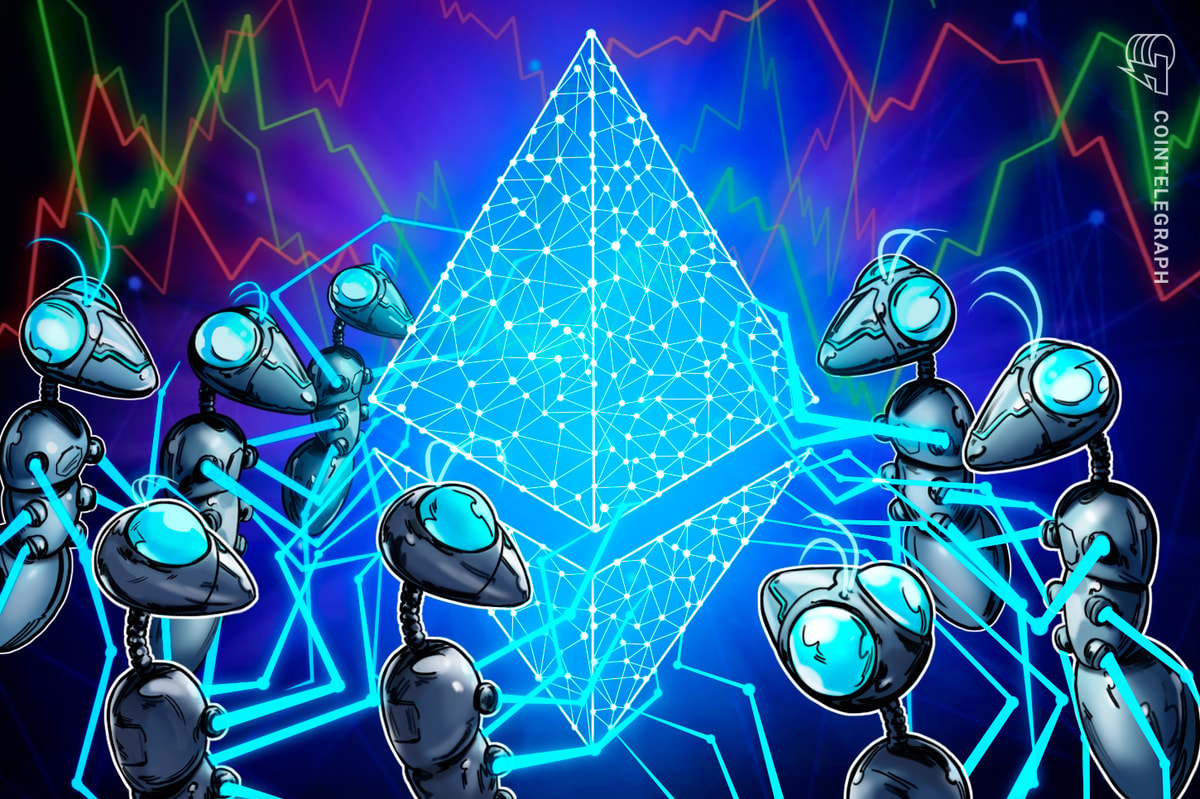In mid-September, Ethereum (ETH 0.08%) underwent one of the most important and publicized upgrades in blockchain technology history. The update changed the method in which transactions are verified, moving from a clunky, energy-consuming method called proof of work to a more streamlined and efficient one called proof of stake. But did you know this update is just one of many planned upgrades in Ethereum’s future?
The most recent upgrade, named The Merge, captured the attention of cryptocurrency investors and blockchain users for months, mainly because of its complexity. There were serious doubts that Ethereum developers could pull it off. But now that they have, The Merge has laid the foundation for other upgrades that should help Ethereum serve more purposes and ultimately rise in value.
In an Oct. 14 announcement, the Ethereum Foundation released the list of updates to be a part of the next upgrade. Dubbed Shanghai, this next upgrade is scheduled for release by September 2023 at the latest and will add necessary functionality to Ethereum.
Upgrades of this nature start with a list of updates before eventually being whittled down to just a select few. Currently there are seven possible candidates, but it’s more than likely that number will shrink as testing occurs and developers begin to prioritize which ones are most feasible and necessary.
New functionality in the Shanghai upgrade
Referred to as Ethereum Improvement Protocols (EIP), there are three updates that immediately seem like they could be part of the Shanghai upgrade.
The first possible update might be one of the most important: a reduction in gas, or user, fees on Layer 2 solutions. Polygon, Arbitrum, and Optimism have grown in popularity over the last couple of years as Ethereum’s popularity has boomed. These Layer 2 solutions help make Ethereum faster and cheaper to use and they are about to get even cheaper.
The list of possible updates has two EIPs that aim to lower the gas fees associated with using Layer 2 solutions. Developers will likely test both and then decide which one to implement. Long story short, Ethereum transactions will be cheaper for its users.
One of the other notable updates that is likely to be a part of Shanghai will be the withdrawal of staked ether tokens. As a part of The Merge, miners were replaced by validators, and in order to become a validator you had to stake 32 tokens. At today’s prices, that’s more than $40,000. Until Shanghai is unveiled, staked ether is locked as collateral and cannot be withdrawn or traded. To keep validators happy and ensure that they continue supporting the networks, it seem like this EIP will definitely be included in the next upgrade.
Last but not least is a planned update to smart contract functionality. Because smart contracts are the backbone of things like decentralized autonomous organizations (DAOs), non-fungible tokens (NFTs), and decentralized finance (DeFi), updating their operability to keep pace with new demands from developers is extremely important for Ethereum to remain competitive.
It can get a little technical, but rather than waiting for smart contract code to be validated, developers will now be able to validate their code during the creation process rather than having to wait until completion.
Ethereum developer Tim Beiko in a blog post said that this will provide two main benefits. First, it will separate code and data, helping Layer 2s handle smart contract code easier and quicker. And as a result, the new smart contract functionality should lower gas fees even further.
A blockchain with long-term value
Ethereum is far from a finished product. Upgrades like The Merge and Shanghai are carefully planned and orchestrated to ensure that the blockchain is able to support the growing demand from its users and developers. For Ethereum to reach its goal of becoming “powerful enough to help all of humanity,” many more upgrades will be on the horizon — and that presents a great opportunity for investors.
Co-founder Vitalik Buterin has said that in its current state Ethereum has only reached 55% of its potential. If that really is the case, that means Ethereum’s all-time high of almost $5,000 could just be scratching the surface. At prices of about $1,350 today, a position in Ethereum seems like a no-brainer considering the long-term value this blockchain could have in the future.
RJ Fulton has positions in Ethereum and Polygon. The Motley Fool has positions in and recommends Ethereum and Polygon. The Motley Fool has a disclosure policy.
Read More: news.google.com









 Bitcoin
Bitcoin  Ethereum
Ethereum  Tether
Tether  XRP
XRP  Solana
Solana  USDC
USDC  Cardano
Cardano  Dogecoin
Dogecoin  TRON
TRON  Lido Staked Ether
Lido Staked Ether  Wrapped Bitcoin
Wrapped Bitcoin  LEO Token
LEO Token  Chainlink
Chainlink  Pi Network
Pi Network  Toncoin
Toncoin  USDS
USDS  Stellar
Stellar  Wrapped stETH
Wrapped stETH  Hedera
Hedera  Avalanche
Avalanche  Shiba Inu
Shiba Inu  Sui
Sui  MANTRA
MANTRA  Litecoin
Litecoin  Bitcoin Cash
Bitcoin Cash  Polkadot
Polkadot  Ethena USDe
Ethena USDe  Bitget Token
Bitget Token  WETH
WETH  Binance Bridged USDT (BNB Smart Chain)
Binance Bridged USDT (BNB Smart Chain)  Hyperliquid
Hyperliquid  WhiteBIT Coin
WhiteBIT Coin  Wrapped eETH
Wrapped eETH  Monero
Monero  Uniswap
Uniswap  sUSDS
sUSDS  Dai
Dai  Aptos
Aptos  OKB
OKB  NEAR Protocol
NEAR Protocol  Pepe
Pepe  Internet Computer
Internet Computer  Mantle
Mantle  Gate
Gate  Ethereum Classic
Ethereum Classic  Ondo
Ondo  Tokenize Xchange
Tokenize Xchange  Aave
Aave  Coinbase Wrapped BTC
Coinbase Wrapped BTC